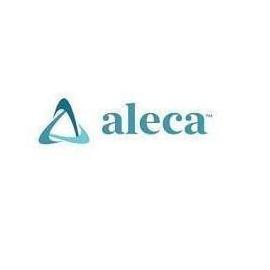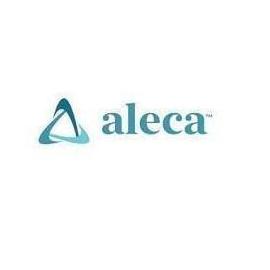Precision Strikes: How Personalized Therapies are Revolutionizing Thyroid Cancer Treatment
For decades, the treatment landscape for thyroid cancer, while generally successful, often relied on a more standardized approach involving surgery, radioactive iodine (RAI) therapy, and thyroid hormone suppression. While these modalities remain crucial, the advent of personalized therapies is ushering in a new era of precision strikes against this disease. By understanding the unique molecular characteristics of an individual's tumor, oncologists can now tailor treatments to target specific vulnerabilities, leading to improved outcomes and potentially fewer side effects.
https://www.marketresearchfuture.com/reports/thyroid-cancer-therapeutic-market-42609
The revolution in personalized thyroid cancer therapy is largely driven by advancements in molecular diagnostics. Next-generation sequencing (NGS) technologies allow for the comprehensive analysis of a tumor's genetic profile, identifying specific mutations and alterations that drive its growth and spread. These genetic fingerprints can reveal the presence of actionable targets – specific proteins or pathways that can be inhibited by targeted drugs.
One of the most significant areas of progress in personalized thyroid cancer therapy involves the identification of mutations in genes like BRAF, RET, and NTRK. The BRAF V600E mutation, for instance, is common in papillary thyroid cancer, the most prevalent subtype. The development of BRAF inhibitors, such as vemurafenib and dabrafenib, has provided new treatment options for patients with RAI-refractory BRAF-mutated papillary thyroid cancer. These drugs specifically target the mutated BRAF protein, inhibiting its activity and slowing or stopping tumor growth.
Similarly, alterations in the RET gene, including fusions and point mutations, are implicated in various thyroid cancer subtypes, including medullary thyroid cancer and certain papillary thyroid cancers. The development of RET inhibitors, such as selpercatinib and pralsetinib, represents a significant breakthrough for patients with these specific genetic alterations. These drugs have demonstrated remarkable efficacy in clinical trials, offering new hope for individuals with advanced or metastatic RET-altered thyroid cancers.
The discovery of NTRK gene fusions in a subset of thyroid cancers has also led to the development of highly effective targeted therapies. NTRK fusion proteins drive tumor growth in various cancer types, including some papillary and anaplastic thyroid cancers. The pan-NTRK inhibitors larotrectinib and entrectinib have shown significant and durable responses in patients with NTRK fusion-positive tumors, regardless of the cancer type. This "tumor-agnostic" approach highlights the power of targeting specific molecular alterations rather than solely focusing on the cancer's origin.
Beyond these well-established targets, ongoing research continues to identify new molecular alterations and develop corresponding targeted therapies for thyroid cancer. This includes investigations into other kinases, signaling pathways, and epigenetic modifications that play a role in tumor development and progression.
The implementation of personalized therapies requires a multidisciplinary approach involving endocrinologists, oncologists, pathologists, and molecular biologists. Accurate molecular testing is crucial for identifying eligible patients, and careful monitoring is necessary to assess treatment response and manage potential side effects.
While personalized therapies offer tremendous promise, they are not without their challenges. Resistance to targeted drugs can develop over time, necessitating further research into mechanisms of resistance and the development of second-generation inhibitors or combination therapies. Furthermore, access to comprehensive molecular testing and these specialized treatments may vary depending on geographical location and healthcare systems.
Despite these challenges, the field of personalized thyroid cancer therapy is rapidly advancing. The ability to precisely target the molecular drivers of an individual's tumor represents a paradigm shift in treatment, offering the potential for more effective and less toxic therapies. As our understanding of the molecular landscape of thyroid cancer continues to grow, we can expect even more sophisticated and personalized treatment strategies to emerge, further revolutionizing the care of patients with this disease. The era of precision strikes in thyroid cancer is well underway, offering a brighter future for many.
For decades, the treatment landscape for thyroid cancer, while generally successful, often relied on a more standardized approach involving surgery, radioactive iodine (RAI) therapy, and thyroid hormone suppression. While these modalities remain crucial, the advent of personalized therapies is ushering in a new era of precision strikes against this disease. By understanding the unique molecular characteristics of an individual's tumor, oncologists can now tailor treatments to target specific vulnerabilities, leading to improved outcomes and potentially fewer side effects.
https://www.marketresearchfuture.com/reports/thyroid-cancer-therapeutic-market-42609
The revolution in personalized thyroid cancer therapy is largely driven by advancements in molecular diagnostics. Next-generation sequencing (NGS) technologies allow for the comprehensive analysis of a tumor's genetic profile, identifying specific mutations and alterations that drive its growth and spread. These genetic fingerprints can reveal the presence of actionable targets – specific proteins or pathways that can be inhibited by targeted drugs.
One of the most significant areas of progress in personalized thyroid cancer therapy involves the identification of mutations in genes like BRAF, RET, and NTRK. The BRAF V600E mutation, for instance, is common in papillary thyroid cancer, the most prevalent subtype. The development of BRAF inhibitors, such as vemurafenib and dabrafenib, has provided new treatment options for patients with RAI-refractory BRAF-mutated papillary thyroid cancer. These drugs specifically target the mutated BRAF protein, inhibiting its activity and slowing or stopping tumor growth.
Similarly, alterations in the RET gene, including fusions and point mutations, are implicated in various thyroid cancer subtypes, including medullary thyroid cancer and certain papillary thyroid cancers. The development of RET inhibitors, such as selpercatinib and pralsetinib, represents a significant breakthrough for patients with these specific genetic alterations. These drugs have demonstrated remarkable efficacy in clinical trials, offering new hope for individuals with advanced or metastatic RET-altered thyroid cancers.
The discovery of NTRK gene fusions in a subset of thyroid cancers has also led to the development of highly effective targeted therapies. NTRK fusion proteins drive tumor growth in various cancer types, including some papillary and anaplastic thyroid cancers. The pan-NTRK inhibitors larotrectinib and entrectinib have shown significant and durable responses in patients with NTRK fusion-positive tumors, regardless of the cancer type. This "tumor-agnostic" approach highlights the power of targeting specific molecular alterations rather than solely focusing on the cancer's origin.
Beyond these well-established targets, ongoing research continues to identify new molecular alterations and develop corresponding targeted therapies for thyroid cancer. This includes investigations into other kinases, signaling pathways, and epigenetic modifications that play a role in tumor development and progression.
The implementation of personalized therapies requires a multidisciplinary approach involving endocrinologists, oncologists, pathologists, and molecular biologists. Accurate molecular testing is crucial for identifying eligible patients, and careful monitoring is necessary to assess treatment response and manage potential side effects.
While personalized therapies offer tremendous promise, they are not without their challenges. Resistance to targeted drugs can develop over time, necessitating further research into mechanisms of resistance and the development of second-generation inhibitors or combination therapies. Furthermore, access to comprehensive molecular testing and these specialized treatments may vary depending on geographical location and healthcare systems.
Despite these challenges, the field of personalized thyroid cancer therapy is rapidly advancing. The ability to precisely target the molecular drivers of an individual's tumor represents a paradigm shift in treatment, offering the potential for more effective and less toxic therapies. As our understanding of the molecular landscape of thyroid cancer continues to grow, we can expect even more sophisticated and personalized treatment strategies to emerge, further revolutionizing the care of patients with this disease. The era of precision strikes in thyroid cancer is well underway, offering a brighter future for many.
Precision Strikes: How Personalized Therapies are Revolutionizing Thyroid Cancer Treatment
For decades, the treatment landscape for thyroid cancer, while generally successful, often relied on a more standardized approach involving surgery, radioactive iodine (RAI) therapy, and thyroid hormone suppression. While these modalities remain crucial, the advent of personalized therapies is ushering in a new era of precision strikes against this disease. By understanding the unique molecular characteristics of an individual's tumor, oncologists can now tailor treatments to target specific vulnerabilities, leading to improved outcomes and potentially fewer side effects.
https://www.marketresearchfuture.com/reports/thyroid-cancer-therapeutic-market-42609
The revolution in personalized thyroid cancer therapy is largely driven by advancements in molecular diagnostics. Next-generation sequencing (NGS) technologies allow for the comprehensive analysis of a tumor's genetic profile, identifying specific mutations and alterations that drive its growth and spread. These genetic fingerprints can reveal the presence of actionable targets – specific proteins or pathways that can be inhibited by targeted drugs.
One of the most significant areas of progress in personalized thyroid cancer therapy involves the identification of mutations in genes like BRAF, RET, and NTRK. The BRAF V600E mutation, for instance, is common in papillary thyroid cancer, the most prevalent subtype. The development of BRAF inhibitors, such as vemurafenib and dabrafenib, has provided new treatment options for patients with RAI-refractory BRAF-mutated papillary thyroid cancer. These drugs specifically target the mutated BRAF protein, inhibiting its activity and slowing or stopping tumor growth.
Similarly, alterations in the RET gene, including fusions and point mutations, are implicated in various thyroid cancer subtypes, including medullary thyroid cancer and certain papillary thyroid cancers. The development of RET inhibitors, such as selpercatinib and pralsetinib, represents a significant breakthrough for patients with these specific genetic alterations. These drugs have demonstrated remarkable efficacy in clinical trials, offering new hope for individuals with advanced or metastatic RET-altered thyroid cancers.
The discovery of NTRK gene fusions in a subset of thyroid cancers has also led to the development of highly effective targeted therapies. NTRK fusion proteins drive tumor growth in various cancer types, including some papillary and anaplastic thyroid cancers. The pan-NTRK inhibitors larotrectinib and entrectinib have shown significant and durable responses in patients with NTRK fusion-positive tumors, regardless of the cancer type. This "tumor-agnostic" approach highlights the power of targeting specific molecular alterations rather than solely focusing on the cancer's origin.
Beyond these well-established targets, ongoing research continues to identify new molecular alterations and develop corresponding targeted therapies for thyroid cancer. This includes investigations into other kinases, signaling pathways, and epigenetic modifications that play a role in tumor development and progression.
The implementation of personalized therapies requires a multidisciplinary approach involving endocrinologists, oncologists, pathologists, and molecular biologists. Accurate molecular testing is crucial for identifying eligible patients, and careful monitoring is necessary to assess treatment response and manage potential side effects.
While personalized therapies offer tremendous promise, they are not without their challenges. Resistance to targeted drugs can develop over time, necessitating further research into mechanisms of resistance and the development of second-generation inhibitors or combination therapies. Furthermore, access to comprehensive molecular testing and these specialized treatments may vary depending on geographical location and healthcare systems.
Despite these challenges, the field of personalized thyroid cancer therapy is rapidly advancing. The ability to precisely target the molecular drivers of an individual's tumor represents a paradigm shift in treatment, offering the potential for more effective and less toxic therapies. As our understanding of the molecular landscape of thyroid cancer continues to grow, we can expect even more sophisticated and personalized treatment strategies to emerge, further revolutionizing the care of patients with this disease. The era of precision strikes in thyroid cancer is well underway, offering a brighter future for many.
0 Comments
0 Shares












